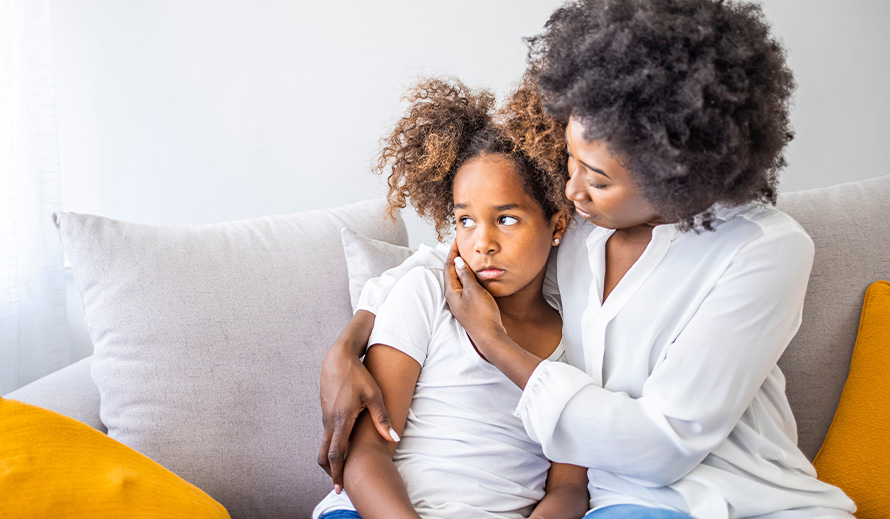By Julia Green, with Julia Belkowitz, M.D., M.P.H., Lyse Deus, M.Ed., and Oneith Cadiz, M.D.
Losing a child to suicide may be the worst imaginable tragedy. Unfortunately, over 25% of youth deaths in the United States are suicide. In 10-to-24-year-olds, suicide is the second leading cause of death.
Suicide is a complicated topic and impacts young people of all races, ethnicities, gender identities, sexualities, and communities.
Suicide can be prevented
Families, pediatric health clinicians, and school staff members can recognize and help children at risk for suicide. All children and teens experience negative emotions at times. However, some youth may exhibit sadness, anxiety, or tiredness due to depression.
If you think your child may be experiencing depression, speak with them about what is going on in his or her life and how he or she may be feeling. Bring your child to see the pediatrician, who can help support your family and suggest treatment options.
Bring up difficult topics and share your own experiences and challenges from when you were younger. Speak to your children when you are concerned.
Speak to your children with empathy and patience. It is natural for parents to feel shocked, upset, and even angry to know their child has considered suicide, but it is most important to focus on your child’s needs without anger or judgment.
Signs to look out for:
• Dramatic behavior changes
• Changes in sleep patterns including excessive sleeping, insomnia, or difficulty sleeping
• Decrease in self-esteem
• Loss of appetite or weight loss
• A decline in grades or overall school performance
• An extreme change in personality such as aggressiveness or anger
• Written or spoken statements such as “I want to die,” “I don’t care anymore,” or “Nothing matters”
If your child is harming themselves or you believe they may want to end their life, immediately bring them to the emergency room or nearest hospital. If you sense your child is at risk of attempting suicide but is not in immediate danger, contact your pediatrician or mental health provider for an evaluation.These professionals can help to make a safety plan.
A safety plan may include:
• A list of triggers or signs that may cause your child’s suicidal thoughts
• Strategies to help them cope with triggers and challenging thoughts
• Identifying supportive people such as family, friends, and teachers
• Designating emergency contacts and what to do in future situations
Helpful resources
Remember, if you are concerned about your child, the National Suicide Prevention Lifeline is open 24 hours a day every day and can be called from anywhere in the United States by calling 988. Team members at the Lifeline can listen and connect you to resources.
The National Alliance on Mental Illness is a resource for any concerned parent.
The Trevor Project website has information for parents of LGBTQ2S+ children.
The American Psychological Association has strategies and tools for parents and teens experiencing racial stress.
You can also call 211 or visit 211miami.org.

